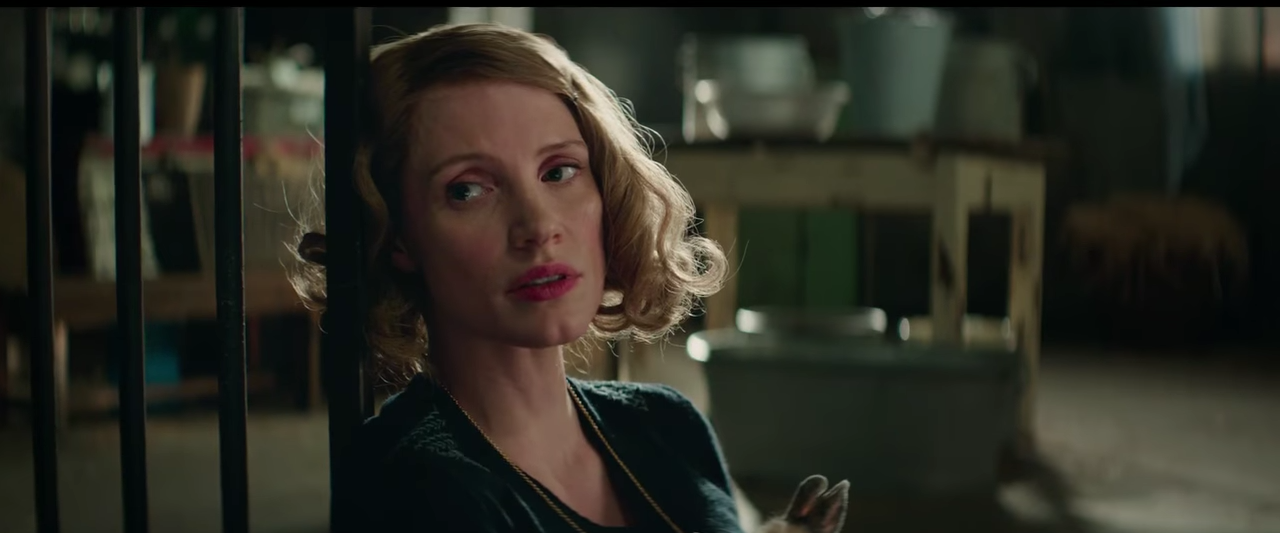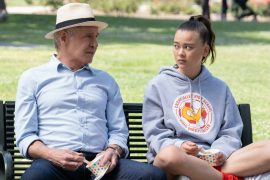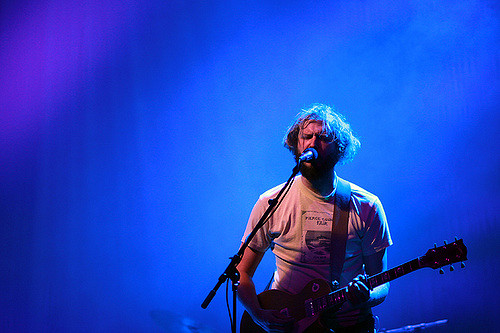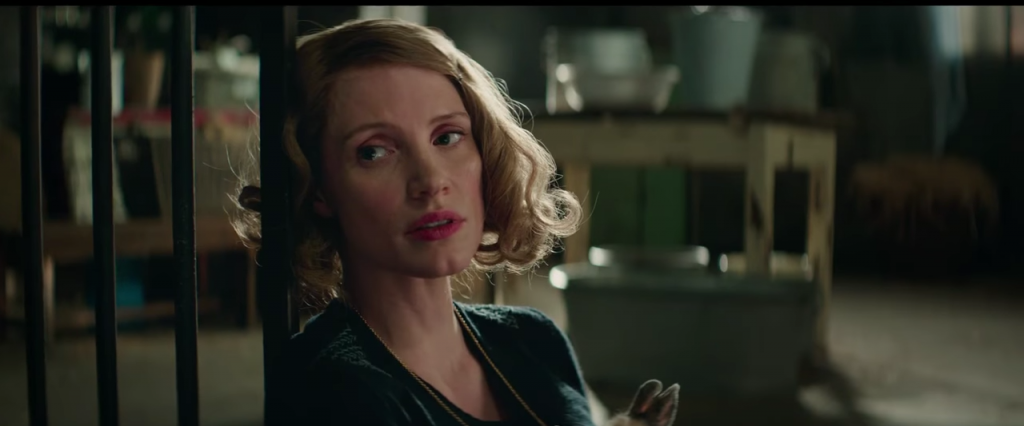
The first thing the viewer sees in “The Zookeeper’s Wife” is the back of Antonina Żabiński’s (Jessica Chastain) head. The camera remains fixed on her, moving behind her, supporting her, as she briefly plays with the lion cubs sleeping next to her son (Timothy Radford) and makes her way to the balcony of her bedroom, looking out over the zoo— and the life— that she and her husband have built for themselves. The following shots show the opening of the zoo for the day, and Antonina’s routine. The first scene establishes the zoo for the audience, likely so that they may better understand the devastation that comes just three scenes later, as German Forces bomb Warsaw, destroying much of the city, zoo included.
The second scene, however, is where the audience truly gets an idea of the kind of woman
Żabiński is. Her son, Ryszard, interrupts a dinner party to inform his mother that there’s something wrong with the elephants. She leaves immediately to find a newborn calf, unable to breathe due to a blockage in its trunk. Without a second though, she climbs into the cage and carefully begins to help the calf, reassuring its mother all the while that she poses no threat.
The message is clear: Żabiński is a woman who will put herself on the line and get her hands dirty without a second thought if it means helping those who cannot help themselves. A sweet thought and a testament to the real-life story that inspired the movie, but perhaps a little heavy handed, and in this way indicative of much of the rest of the film.
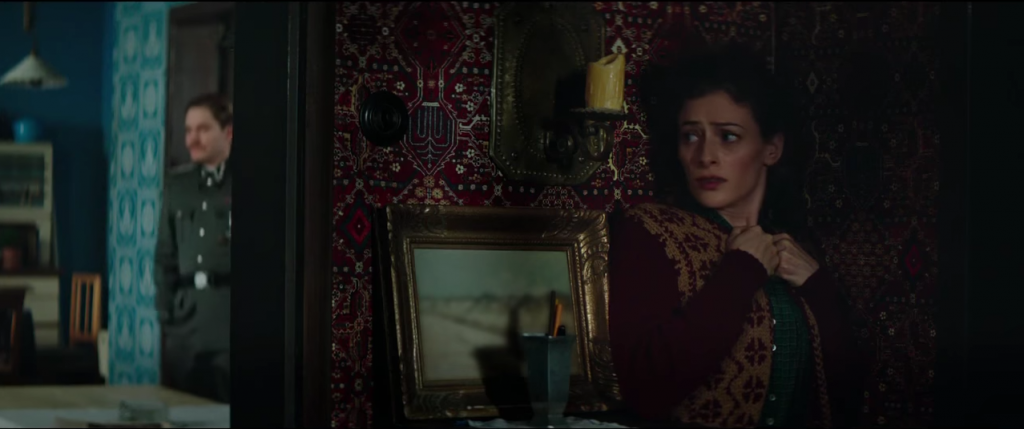
“The Zookeeper’s Wife,” while touching, is altogether not much more than an upsetting reframing of the suffering and pain of the Holocaust as an opportunity for gentiles to tap into their most compassionate selves, as opposed to an opportunity to highlight the Jewish point of view surrounding these events. The film toes, and too often comes close to crossing, the line between using Żabiński’s history as a compassionate and loving zookeeper to inform her decision to shelter refugees, and comparing those refugees to the animals that she sheltered in easier times. The first time Jews appear onscreen, weighed down with coats and suitcases, shuffling through the streets, Ryszard remarks to his mother, “They look like mules.”
Much of the film’s establishing of the plight of Jews in Warsaw is framed through Ryszard’s eyes; a clumsy, if heartstring-tugging, attempt to drive home the horrors of the time— as though they weren’t clear enough. The first time Jan Żabiński (Johan Heldenbergh), Antonina’s husband, drives through the ghetto to pick up the first few refugees to be sheltered with them, the camera focuses alternately between Ryszard’s face peering through the truck window and gratuitous slow motion scenes of the suffering outside. A girl, later to be taken in by the Żabińskis, is accosted by two German soldiers, and countless other refugees are shown being harassed or clearly in pain. As Ryszard gazes on, the audience sees him process what these people are going through and why his parents have made the decision to shelter them. The audience, however, doesn’t need this clarification, and it almost comes off as condescending.
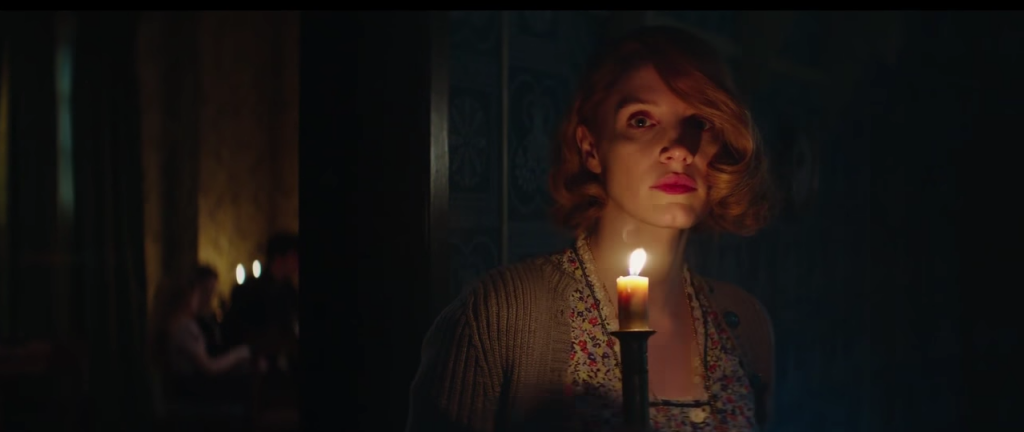
Similar to the filtering of Jewish suffering through a Christian child’s eyes in earlier scenes, the scene during which the Warsaw Ghetto is burned to the ground is spliced with a scene of a passover Seder in the the Żabińskis’ kitchen. The roar of the flames and the sharp commands of German officers play under singing from one of the Żabińskis’ younger guests– the girl who had been accosted and later raped during Jan and Ryszard’s first visit to the ghetto. Her voice floats, clear and perfect, over the sounds of destruction, as the camera cuts from her face, gently lit by flickering candlelight, to buildings engulfed in giant flames, an illustration of the state of Europe at the time. It may be one of the longest scenes featuring the Jewish refugees who stay with the Żabińskis.
“The Zookeeper’s Wife” has a few things going for it— excellent performances by the majority of the cast– Chastain in particular– the fact that it was written and directed by women, a rarity in Hollywood, and that it does bring to light a truly incredible story. That said, the lack of agency that the Jewish characters are awarded in a movie about what is fundamentally a Jewish story is troubling and indicative of the issues that plague the genre of Holocaust movies as a whole. The film simultaneously shies away from the realities of the time while still mishandling the suffering that it does show. The Żabiński’s story is one that deserves to be told, but both the story and the refugees whom it’s really about deserve a better telling.
“The Zookeeper’s Wife” was released on March 31, 2017. It was directed by Niki Caro, written by Angela Workman, and stars: Jessica Chastain, Johan Heldenbergh, Daniel Brühl, and Timothy Radford. “The Zookeeper’s Wife” is rated PG-13.

